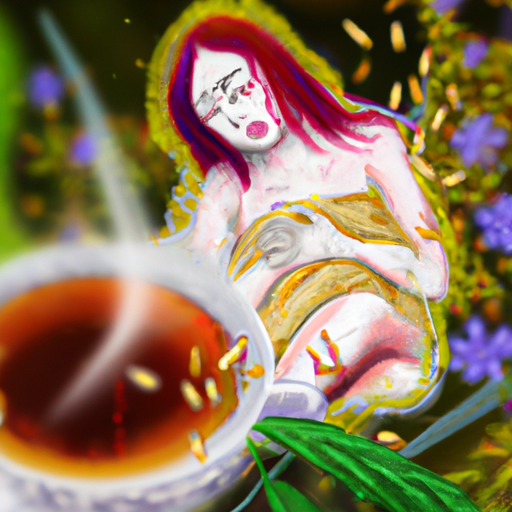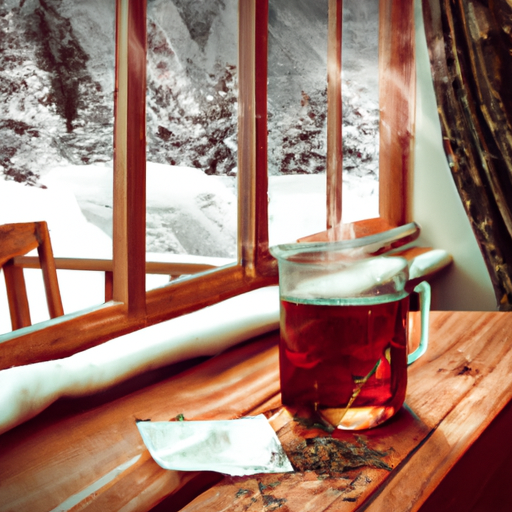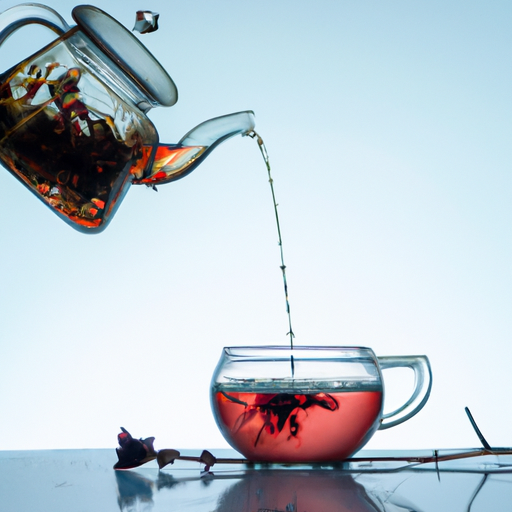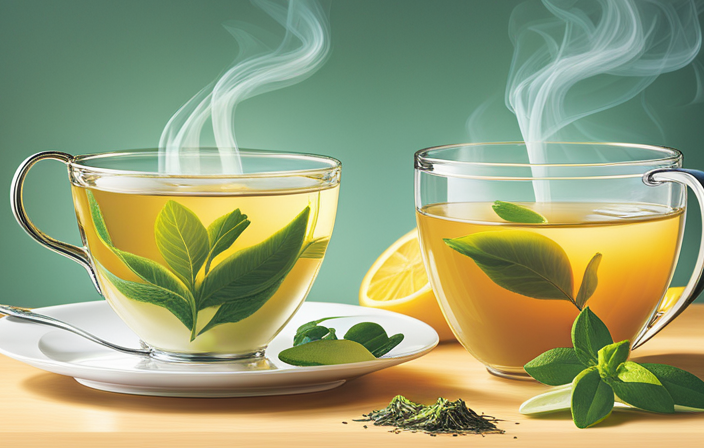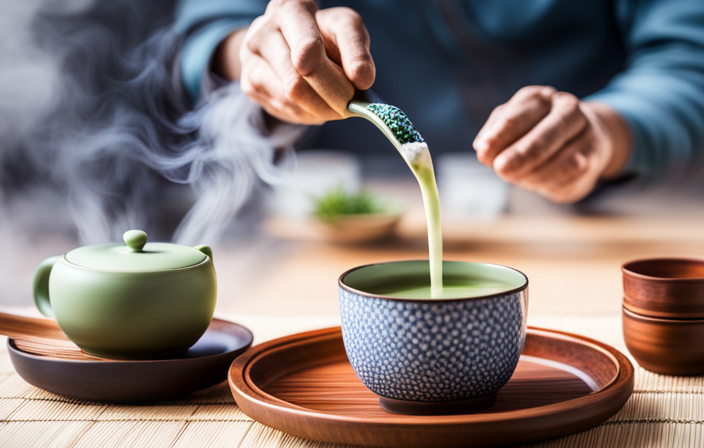Barley Tea
When Does Barley Tea Expire?
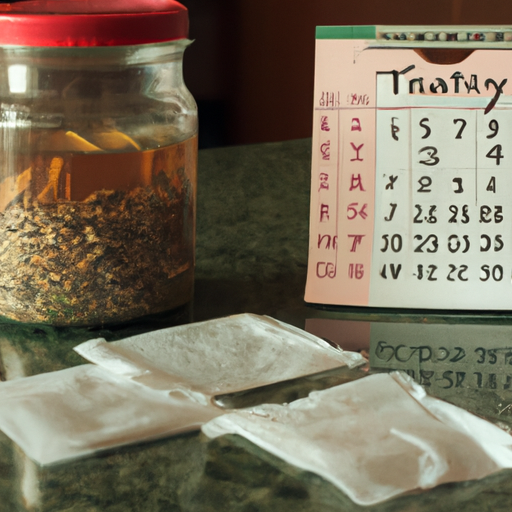
Were you aware that in Japan, barley tea ranks as a top favorite among teas? Indeed, it’s favored to such an extent that it surpasses even green tea in consumption rates! Personally, as an aficionado of barley tea, I’ve caught myself pondering over how long it lasts. After all, sipping on stale or expired tea is the last thing anyone desires. Hence, the question arises: when does barley tea go bad?
The answer isn’t as straightforward as you might think. While some teas have a long shelf life, others can go bad quickly if not stored properly. Barley tea falls somewhere in between. There are several factors that affect its shelf life, such as the form it comes in and whether or not it’s been opened.
In this article, we’ll explore these factors and provide tips on how to extend the shelf life of your barley tea so you can enjoy a fresh cup every time.
Key Takeaways
- Proper storage and packaging are crucial for preserving the aroma and flavor of barley tea, as well as extending its shelf life.
- Environmental factors such as sunlight exposure, moisture, and heat can cause faster deterioration of the tea.
- Unopened barley tea can last up to a year if stored properly, while opened tea should be consumed within six months and stored in an airtight container in the refrigerator.
- Expired or contaminated barley tea should be disposed of properly, as consuming it can cause stomach discomfort and health problems.
Overview of Barley Tea
If you haven’t tried barley tea yet, you’re missing out on a delicious and refreshing beverage that’s perfect for any time of day! Barley tea is a popular drink in many Asian countries, especially in Japan and Korea.
It’s made by steeping roasted barley grains in hot water until the liquid turns brown and has a nutty flavor. Drinking barley tea has several health benefits. It’s rich in antioxidants and can help lower cholesterol levels, reduce inflammation, and improve digestion.
It also contains melatonin which can help regulate sleep patterns. In addition to its health benefits, barley tea has cultural significance in Asia as it’s often served during meals or offered to guests as a sign of hospitality. Now let’s talk about factors affecting the shelf life of barley tea.
Factors Affecting Shelf Life
When it comes to the shelf life of barley tea, there are a few factors that affect how long it can be stored. One important factor is storage conditions; if the tea is exposed to light, heat, or moisture, it may spoil more quickly.
Another important factor is packaging; tightly sealed bags or containers can help extend the tea’s shelf life. Finally, brewing method can also play a role in how long the tea will last; using clean equipment and avoiding contamination can help prevent spoilage.
Storage Conditions
To keep your barley tea fresh, it’s important to store it properly.
Barley tea can be stored in an airtight container in a cool and dry place such as your pantry or refrigerator. This will help to prevent moisture from getting into the tea leaves which can cause them to go bad faster.
It’s also important to keep the tea away from direct sunlight and heat sources. Drinking barley tea has many benefits, including its ability to aid digestion, lower blood pressure, and boost immunity.
There are different types of barley tea leaves available on the market, including roasted and unroasted varieties. Each type has its own unique flavor profile and aroma.
When storing your barley tea, make sure to pay attention to the storage instructions on the packaging for optimal freshness.
Packaging
Proper packaging is crucial in keeping your favorite barley tea fresh and flavorful. When it comes to barley tea, there are various sustainable options available for packaging.
One of the most popular ones is using airtight containers made of glass or stainless steel. These containers help in preserving the aroma and flavor of the tea by preventing air from entering and oxidizing the leaves.
Another sustainable option for packaging barley tea is using biodegradable bags made of natural materials like cotton or hemp. These bags not only keep the tea fresh but also reduce waste as they can be composted after use. However, it’s important to note that the type of packaging used can have an impact on the flavor of barley tea.
For instance, if stored in plastic bags or containers, the tea may absorb some of the chemicals present in them, affecting its taste.
When it comes to brewing method, there are several factors that can affect how your barley tea tastes.
Brewing Method
Brewing your favorite barley tea using different methods can significantly impact its flavor and aroma. To get the most out of your cup, here are some tips to keep in mind:
| Method | Description |
|---|---|
| Boiling | Bring water to a boil and add barley tea bag. Let steep for 3-5 minutes before removing the bag. |
| Cold Brew | Add barley tea bag to cold water and let steep in the fridge for at least 6 hours or overnight. |
| Sun Tea | Place barley tea bags in a pitcher with cold water and leave it outside in direct sunlight for several hours. |
Each method has its advantages depending on personal preferences, but generally speaking, boiling is the fastest way to brew barley tea while cold brewing produces a smoother taste with less bitterness.
Aside from being delicious, barley tea also offers numerous health benefits such as aiding digestion, reducing inflammation, and regulating blood sugar levels. So why not explore different brewing methods and discover which one you like best? It’s an easy way to incorporate a healthy beverage into your daily routine.
As we’ve explored how to make the perfect cup of barley tea, it’s important to note that even unopened packages have expiration dates. Let’s take a closer look at when unopened barley tea expires.
Shelf Life of Unopened Barley Tea
If you store unopened barley tea in a cool, dry place away from direct sunlight, it should last for up to a year before its expiration date. But remember, don’t cry over spilled milk! Exposure to sunlight can cause the quality of the tea to deteriorate faster than normal, making it lose its aroma and flavor.
If you notice your unopened barley tea has been exposed to direct sunlight for long periods of time, it’s best to dispose of it properly. To ensure that you’re not drinking expired barley tea, always check the expiration date on the packaging before consumption. Expired barley tea may be harmful to your health and can cause adverse effects such as stomach discomfort or bloating.
Proper disposal of expired barley tea is important too; you can either throw them away in a trash bin or compost them if they are biodegradable. As with any food or drink item, once you open a pack of barley tea, its shelf life decreases significantly. Thus, it’s essential to consume opened barley tea within six months after opening.
Storing opened barley tea in an airtight container will help preserve its freshness and aroma for longer periods.
Shelf Life of Opened Barley Tea
Hey, did you know that once you crack open a pack of barley tea, it’s best to drink it within six months to savor its freshness and aroma?
Unlike unopened packs that can last for up to two years beyond the printed expiration date, opened barley tea has a much shorter shelf life due to oxidation.
The moment you expose the contents of the package to air and moisture, chemical reactions occur which can negatively affect the taste and quality of your drink. Possible causes for shortened shelf life of opened barley tea include improper storage conditions, exposure to light or heat, and contamination.
To minimize these factors, store your opened pack in an airtight container away from direct sunlight or heat sources. You may also want to refrigerate it for better preservation. If you notice any strange smell or mold growth on your barley tea before the six-month mark is up, discard it immediately as consuming contaminated drinks can lead to health risks.
Environmental factors such as humidity levels and temperature fluctuations also play a significant role in determining how long your opened barley tea will stay fresh. High humidity levels can increase moisture content in the air which promotes bacteria growth while extreme temperatures accelerate chemical reactions that break down organic compounds in your drink.
To extend its shelf life further, consider using desiccants like silica gel packets or investing in a climate-controlled storage solution if you live in areas with unstable weather conditions. Now that we’ve covered how environmental factors affect the longevity of your opened barley tea let’s move on to discussing different forms of this popular Asian beverage.
Different Forms of Barley Tea
There are various forms of barley tea available in the market, and according to a recent survey, iced barley tea is the most popular among consumers in South Korea. This refreshing drink is perfect for hot summer days and provides numerous health benefits. Barley tea is known to improve digestion, boost metabolism, and promote weight loss. Moreover, it contains antioxidants that help fight free radicals and reduce the risk of chronic diseases.
Apart from iced barley tea, there are other forms of this delicious beverage such as roasted barley tea and green barley tea. Roasted barley tea has a nutty flavor profile and is often enjoyed during cool weather. On the other hand, green barley tea is made from young leaves of the plant before they fully mature. It has a mild taste with grassy undertones and is rich in vitamins A, C, E, and K.
With different flavors to choose from, you might be wondering how long each type lasts before expiring or losing its quality. The shelf life of unopened packaged barley tea varies depending on the manufacturer’s recommendations but typically ranges between six months to two years. Once opened, however, it’s best to consume within a few weeks for optimal freshness.
In the next section, we’ll discuss how to store your barley tea properly to extend its shelf life even further.
How to Store Barley Tea
When it comes to storing barley tea, I recommend using airtight containers made of glass or ceramic. This will prevent any moisture or air from entering and prolong the shelf life of your tea.
Additionally, it’s important to store your barley tea in a cool and dry place away from direct sunlight or heat sources. By following these guidelines, you can ensure that your barley tea stays fresh and delicious for as long as possible.
Best Storage Containers
To keep your barley tea fresh, it’s important to store it in a container that can maintain an airtight seal. There are several types of containers that are suitable for this purpose, including glass jars with screw-top lids, plastic containers with snap-on lids, and metal tins with tight-fitting covers.
Each of these options provides benefits when it comes to keeping your barley tea fresh. Glass jars are transparent so you can easily see the contents and they don’t absorb flavors or odors from other foods stored nearby. Plastic containers are lightweight and durable, making them ideal for travel or outdoor activities. Metal tins offer added protection against light exposure and can help to preserve the flavor of your barley tea over time.
Whatever type of container you choose, make sure it has an airtight seal to prevent moisture and air from affecting the quality of your brew.
Now let’s talk about recommended storage temperature for optimal freshness.
Recommended Storage Temperature
For the best flavor and aroma, you’ll want to store your barley tea at an optimal humidity level and recommended temperature. A cool, dark place is ideal for preserving its freshness for a longer duration.
The ideal temperature range for storing barley tea is between 40-60°F (4-15°C), which prevents it from deteriorating due to heat exposure. It’s essential to keep the tea away from sunlight as it can rapidly degrade its quality.
When choosing a storage location, it’s best to avoid areas with high humidity levels as moisture can cause mold growth, which can affect the taste of the tea. If you’re storing your barley tea in a container, ensure that it’s sealed tightly to prevent air and moisture from entering.
With proper storage techniques, you can extend the shelf life of your barley tea while maintaining its flavor and aroma. In the next section, I’ll discuss ways to avoid moisture and heat when storing your barley tea.
Avoiding Moisture and Heat
To keep your barley tea fresh and flavorful, it’s important to protect it from moisture and heat. Moisture can cause the tea leaves to become soggy, leading to spoilage. Heat, on the other hand, can cause the tea leaves to break down and lose their flavor over time.
To prevent spoilage and preserve flavor, you should store your barley tea in a cool, dry place away from direct sunlight. One tip for storing barley tea is to use an airtight container or ziplock bag. This will help prevent moisture from getting in and keep the tea fresh for longer.
Another creative way to repurpose expired barley tea is by using it as a natural fertilizer for plants. Simply mix the used leaves with soil or compost for added nutrients.
In the next section, we’ll discuss how to tell if your barley tea has gone bad so that you can avoid waste and save money.
How to Tell if Barley Tea has Gone Bad
If you’re wondering whether your barley tea has gone bad, look for signs like an off smell or strange taste. As with any food or drink, expired barley tea can cause health problems if consumed. Some common signs of spoilage include a sour or musty odor and a bitter taste. If you notice any of these signs, it’s best to throw away the tea and avoid drinking it.
To further determine whether your barley tea has gone bad, check the appearance and color. Fresh barley tea typically has a clear, golden-brown color while expired tea may appear cloudy or have sediment at the bottom of the container. Additionally, if the packaging is damaged or shows signs of moisture exposure, this can also indicate that the tea is no longer safe to consume.
It’s important to note that consuming expired barley tea can have negative effects on your health. Drinking spoiled tea can cause stomach discomfort such as cramping and diarrhea. In severe cases, it may even lead to food poisoning which requires medical attention. Therefore, always be vigilant in checking for signs of spoilage before consuming your barley tea to ensure its freshness and safety.
To extend the shelf life of your barley tea and prevent spoilage from occurring in the first place, there are several tips you should follow. These will be discussed in the next section on ‘Tips for Extending The Shelf Life Of Barley Tea’.
Tips for Extending the Shelf Life of Barley Tea
When it comes to extending the shelf life of barley tea, there are a few key tips that I always follow.
First, vacuum sealing is an excellent way to keep the tea fresh for longer periods of time.
Additionally, refrigeration can help to prevent spoilage and maintain the quality of the tea.
Finally, freezing can be a good option if you want to store large quantities of barley tea for an extended period.
By following these simple steps, you can ensure that your barley tea stays fresh and delicious for as long as possible.
Vacuum Sealing
By vacuum sealing your barley tea, you’ll be able to keep it fresh for a longer period of time and ensure that it stays flavorful until you’re ready to drink it. Vacuum sealing is an excellent method for long term preservation of food items, including barley tea. Here are three reasons why vacuum sealing is a great option:
-
No air means no bacteria: When you vacuum seal your barley tea, all the air is removed from the packaging. This means that there’s no chance for bacteria to grow and spoil the tea over time.
-
Protection from moisture: Moisture can cause mold growth which can ruin your barley tea. Vacuum sealing protects your tea bags from moisture, keeping them dry and preserving their quality.
-
Longer shelf life: With proper storage conditions, vacuum sealed barley tea bags can last up to two years without losing their flavor or aroma.
Refrigeration is another way to extend the shelf life of your barley tea if you don’t have access to a vacuum sealer.
Refrigeration
To keep your barley tea fresh and flavorful for longer, you can simply refrigerate it. Proper refrigeration is key in extending the life of your barley tea. The ideal temperature to store barley tea is between 35°F to 40°F (1°C to 4°C). This will help prevent bacterial growth and slow down oxidation, which can negatively affect the taste of your tea.
It’s important to note that even with proper refrigeration, there’s still an expiration date for barley tea. On average, unopened packages of barley tea have a shelf life of about six months from the date of production. Once opened, it should be consumed within a month or two. Be sure to check the packaging for any specific storage instructions or expiration dates, as they may vary depending on the brand.
Now let’s move on to another method of preserving your barley tea: freezing.
Freezing
If you’re looking for a way to save your barley tea for later, why not try freezing it? By doing so, you’ll be able to extend the life of your tea and still enjoy its flavor when you’re ready.
However, before you freeze your barley tea, there are some important things to keep in mind:
-
Choose the right container: When freezing barley tea, it’s important to use an airtight container that won’t allow air or moisture to seep in. Glass jars with tight-fitting lids or plastic containers with screw-on caps work well.
-
Leave room for expansion: Barley tea expands when frozen, so leave some space at the top of the container to prevent it from bursting.
-
Thawing techniques: To thaw your frozen barley tea, simply take it out of the freezer and let it sit at room temperature until it’s completely thawed. Avoid microwaving or using hot water to speed up the process.
With these tips in mind, freezing is a great way to keep your barley tea fresh for longer periods of time. In the next section, we’ll explore some creative uses for expired barley tea that you may not have considered before.
Creative Uses for Expired Barley Tea
As I mentioned earlier, barley tea does have a shelf life and will eventually expire. However, instead of throwing away expired barley tea, there are actually some creative uses for it.
For example, you can use it in cooking as a marinade or broth base. You can also incorporate it into DIY beauty products such as toners and hair rinses.
And lastly, you can even use it in your gardening routine by using it as a natural fertilizer for your plants.
Cooking
You can never go wrong with cooking barley tea, especially when you’re in the mood for a warm and comforting beverage. Not only does it have a unique nutty flavor, but it also has several nutritional benefits that make it an excellent choice for those who want to maintain a healthy lifestyle.
To give you an idea of how versatile barley tea is, I’ve put together this table with some recipe ideas:
| Recipe | Ingredients | Instructions |
|---|---|---|
| Barley Tea Latte | Barley tea bags, milk or non-dairy milk, sweetener | Steep barley tea bags in hot water. Add warmed milk and sweetener to taste. |
| Barley Tea Soup | Chicken or vegetable broth, cooked barley, vegetables | Combine all ingredients in a pot and simmer until vegetables are tender. Serve hot. |
| Barley Tea Smoothie | Frozen banana, spinach leaves, almond milk | Blend all ingredients until smooth. Enjoy! |
Now that you have some recipe ideas to try out with your leftover barley tea, let’s move on to another creative use – DIY beauty products!
DIY Beauty Products
Get ready to pamper yourself with DIY beauty products made from your leftover barley tea – it’s like having a spa day at home! Barley tea is not only delicious, but it also has many benefits for the skin.
You can use barley tea to make various DIY face masks that will help you achieve healthy and glowing skin. One of the easiest ways to incorporate barley tea into your skincare routine is by using it as a toner. Simply brew some barley tea and allow it to cool down before applying it to your face with a cotton pad. The antioxidants in the barley tea will help reduce inflammation and soothe irritated skin.
Additionally, you can mix ground oatmeal, honey, and brewed barley tea to create an exfoliating face mask that will leave your skin feeling soft and smooth. These natural skincare options are perfect for those who want to avoid harsh chemicals in their beauty products.
Now let’s transition into the subsequent section about gardening. If you’re interested in growing your own herbs or plants for DIY beauty products, keep reading!
Gardening
Transform your backyard into a serene oasis of natural beauty by delving into the art of gardening. Whether you are an experienced gardener or just starting out, there is always something new to learn about cultivating plants and creating a sustainable environment. One of the great benefits of gardening is being able to grow your own ingredients for homemade skincare products. Not only is this cost-effective, but it also ensures that you are using fresh, organic ingredients that are free from harmful chemicals.
To get started with gardening, it’s important to understand the basics of composting and indoor gardening techniques. Composting involves using organic matter such as food scraps and yard waste to create nutrient-rich soil for your plants. By composting, you can reduce waste and improve the health of your garden at the same time. Indoor gardening techniques allow you to grow plants even if you don’t have access to outdoor space or live in a colder climate. This includes using containers, hydroponics systems, and artificial lighting to provide optimal growing conditions for your plants. With these skills in hand, you’ll be well on your way to creating a beautiful and sustainable garden that can provide both nourishment for your body and joy for your soul.
| Benefits of Composting | Indoor Gardening Techniques | Tips for Success |
|---|---|---|
| Reduces Waste | Use Containers | Choose the Right Plant |
| Improves Soil Quality | Hydroponics Systems | Provide Adequate Lighting |
| Saves Money | Artificial Lighting | Monitor Moisture Levels |
| Promotes Sustainable Living | Regularly Prune Plants |
Table: A helpful guide for beginner gardeners.
Frequently Asked Questions
How long can I keep brewed barley tea in the fridge before it goes bad?
I always store my brewed barley tea in the fridge for up to 3 days before it starts to lose its flavor and nutritional benefits. When it comes to storing methods, keeping it in an airtight container is important as exposure to air can cause the tea to oxidize and spoil quickly.
As for the benefits of drinking barley tea, there are plenty! It’s rich in antioxidants, has anti-inflammatory properties, aids digestion, and even helps with weight loss. That being said, it’s crucial to consume freshly brewed barley tea regularly to reap all these health benefits. So if you’re making a large batch, make sure you drink it within a few days while still fresh.
Can I drink barley tea after its expiration date has passed?
I don’t recommend drinking expired barley tea due to potential health risks. Using expired tea can result in a decrease in quality, flavor, and aroma. Additionally, the natural oils and compounds in the tea may break down over time, leading to microbial growth or contamination.
Consuming expired tea can result in food poisoning symptoms such as vomiting, diarrhea, or stomach cramps. It’s best to check the expiration date on the packaging before brewing and consuming the tea. If you’ve already brewed tea that has passed its expiration date, it’s safer to discard it rather than risking your health by drinking it.
Does the packaging of barley tea affect its shelf life?
When it comes to the shelf life of barley tea, the packaging can have a significant impact. Properly sealed and stored in a cool, dry place, barley tea can last for up to two years.
However, if the packaging is damaged or exposed to moisture or heat, the tea may spoil more quickly. To ensure freshness and longevity of your barley tea, it’s important to store it in an airtight container away from direct sunlight or heat sources.
Avoid storing near strong odors as well, as this can affect the flavor of the tea. By following these storage tips and keeping an eye on the packaging integrity, you can enjoy fresh and flavorful barley tea for months to come.
Can I freeze barley tea to extend its shelf life?
Freezing options are available for barley tea to extend its shelf life. I’ve found that storing barley tea in an airtight container before freezing it can preserve the flavor and quality of the tea.
Freezing is an effective method to maintain the freshness of barley tea, especially if you want to store it for an extended period. However, it’s crucial to note that once you defrost the tea, it should be consumed immediately to avoid any bacterial growth or change in taste.
Freezing barley tea can be a convenient option for those who enjoy this refreshing drink but don’t consume it frequently enough to finish a package before its expiration date. By following proper storage techniques and keeping the suggested timeline in mind, you can enjoy your favorite beverage without worrying about wasting unused portions due to spoilage.
Is it safe to drink barley tea that has changed color or developed a strange odor?
If barley tea has changed color or developed a strange odor, it’s not safe to drink. These changes could indicate the growth of harmful bacteria or mold, which can pose health risks if consumed.
The reasons for changes in color and odor may vary, but exposure to light and air, high temperatures, and moisture are common culprits. It’s important to store barley tea properly in an airtight container away from direct sunlight and heat sources to prevent spoilage.
Regularly check the appearance and smell of the tea before consuming it to ensure its safety. If there are any concerns about the quality of the tea, it’s best to discard it rather than risk getting sick.
Conclusion
In conclusion, as someone who enjoys drinking barley tea on a regular basis, it’s important to know how long it can last before going bad. According to research, unopened barley tea can last up to two years if stored properly in a cool and dry place.
However, once opened, its shelf life decreases significantly and should be consumed within a few months. One interesting statistic that stood out during my research is that roasted barley tea has a longer shelf life compared to non-roasted barley tea.
Roasted barley tea can last up to three years when stored properly while non-roasted barley tea typically lasts only six months to one year. Knowing this information can help individuals make informed decisions when purchasing and storing their preferred form of barley tea.
By following proper storage techniques and being mindful of the expiration date, individuals can enjoy the health benefits of delicious and refreshing barley tea for an extended period of time.
Barley Tea
Barley Tea Benefits When Pregnant

As both a nutritionist and a parent, I understand the significance of maintaining a nutritious and well-rounded diet throughout pregnancy. A beverage that I frequently suggest to my expecting clients is barley tea. This is a herbal tea without caffeine, crafted from toasted barley grains, and it enjoys widespread popularity across various Asian countries.
Not only is barley tea refreshing and delicious, but it also has numerous health benefits for pregnant women. From relieving nausea and morning sickness to regulating blood sugar levels, barley tea can help support a healthy pregnancy.
In this article, I will explore the nutritional benefits of barley tea during pregnancy and how it can promote good health for both the mother and the baby.
Key Takeaways
- Barley tea is a caffeine-free herbal tea that has numerous health benefits for pregnant women, including relieving nausea and morning sickness, regulating blood sugar levels, reducing swelling and bloating, and providing essential vitamins and minerals for fetal development.
- Regular consumption of barley tea can help lower cholesterol levels, reduce the risk of heart disease, and improve digestion.
- Barley tea is a natural diuretic that can help reduce water retention and swelling associated with gestational diabetes.
- Barley tea is a popular lactation aid that increases milk production and is a great source of hydration for breastfeeding mothers.
What is Barley Tea and How is it Made?
Barley tea is a popular beverage in East Asia made from roasted barley grains. It has a nutty flavor and natural sweetness that makes it refreshing during hot weather. The tea is available in various varieties, including green barley tea, roasted barley tea, and barley tea mixed with other herbs and spices.
In addition to its delicious taste, barley tea has several health benefits for non-pregnant individuals. It’s a rich source of antioxidants that help combat free radicals in the body, which can contribute to chronic diseases such as cancer and heart disease. Regular consumption of barley tea may also help to lower cholesterol levels, reduce the risk of heart disease, and improve digestion.
During pregnancy, barley tea has nutritional benefits as well. It’s a good source of vitamins and minerals essential for fetal development, including folic acid vital for neural tube development in the early stages of pregnancy. Barley tea is also rich in iron, which helps prevent anemia in pregnant women. Additionally, the tea is a natural diuretic that helps reduce swelling and bloating during pregnancy.
Nutritional Benefits of Barley Tea during Pregnancy
Pregnant women who consume foods and drinks rich in essential nutrients like calcium, iron, and folate can potentially reduce the risk of birth defects and complications during pregnancy. Barley tea is a great source of these nutrients, making it an excellent choice for expectant mothers.
In fact, Sarah, a pregnant mother who regularly drank barley tea, noticed an increase in her calcium intake and a decrease in pregnancy-related leg cramps. In addition to providing essential nutrients, barley tea is also an excellent way to stay hydrated during pregnancy.
Adequate hydration is crucial for fetal development, as it helps to maintain amniotic fluid levels and supports the growth of the placenta. Drinking barley tea can help to ensure that pregnant women stay hydrated, which can have a positive impact on both the mother and the baby.
Overall, the nutritional benefits of barley tea during pregnancy are numerous. From providing essential nutrients to supporting hydration, barley tea is an excellent choice for expectant mothers. In the next section, we will explore how barley tea can also help to relieve nausea and morning sickness during pregnancy.
Relieving Nausea and Morning Sickness
If you’re experiencing nausea and morning sickness during pregnancy, there’s a natural remedy that could help. Barley tea has been known to relieve the discomfort caused by morning sickness.
The tea contains antioxidants and minerals that can help calm the stomach, reduce inflammation, and improve digestion. Acupressure techniques are another natural remedy that can help alleviate nausea and morning sickness.
Acupressure involves applying pressure to certain points on the body to stimulate relaxation and reduce stress. This technique has been used for centuries to treat various health conditions, including nausea and vomiting.
Some of the acupressure points that are known to relieve nausea include the wrist, earlobe, and the area between the two eyebrows. Herbal remedies, such as ginger and peppermint tea, can also help manage nausea and morning sickness during pregnancy.
Ginger has anti-inflammatory properties that can help soothe the stomach and improve digestion. Peppermint tea has a calming effect on the digestive system and can help reduce nausea. These herbal remedies can be consumed in the form of tea or added to meals as a spice.
Relieving nausea and morning sickness is just one of the many benefits of drinking barley tea during pregnancy. The tea can also help regulate blood sugar levels and manage gestational diabetes.
By incorporating barley tea into your daily routine, you can enjoy a natural and effective remedy that can improve your overall health during pregnancy.
Regulating Blood Sugar and Managing Gestational Diabetes
You can manage gestational diabetes naturally by incorporating a simple daily routine. Did you know that gestational diabetes affects up to 10% of pregnancies in the United States, according to the Centers for Disease Control and Prevention? As a pregnant woman, it’s essential to keep your blood glucose levels in check to avoid pregnancy complications.
One way to do this is by drinking barley tea regularly. Here are some benefits of barley tea for blood glucose control during pregnancy:
- Barley tea contains antioxidants that help regulate blood sugar levels.
- It has a low glycemic index, which means it doesn’t cause a spike in blood sugar levels.
- Barley tea is a natural diuretic, which can help reduce water retention and swelling associated with gestational diabetes.
- It’s caffeine-free, making it a safe alternative to coffee or other caffeinated drinks.
- Drinking barley tea can improve insulin sensitivity, making it easier for your body to use glucose for energy.
Incorporating barley tea into your daily routine can help manage gestational diabetes and promote a healthy pregnancy.
Next, let’s explore how barley tea can also promote good sleep and relaxation.
Promoting Good Sleep and Relaxation
Relaxing and getting a good night’s sleep is important for both mom and baby during pregnancy, and incorporating natural remedies into your routine can be helpful. One such remedy that has been known to promote good sleep and relaxation is barley tea. This tea has been a favorite in many Asian countries for centuries and has numerous health benefits, including better digestion and stress relief.
Barley tea contains melatonin, a hormone that helps regulate sleep and wake cycles. Drinking a warm cup of barley tea before bed can help you fall asleep faster and stay asleep longer. Additionally, the tea has a calming effect on the nervous system, which can help reduce stress and anxiety. This is especially important during pregnancy, as high levels of stress can have negative effects on both the mother and baby.
Incorporating barley tea into your daily routine during pregnancy can have a positive impact on your overall health and well-being. Not only does it promote good sleep and relaxation, but it also aids in digestion and helps reduce stress. In the next section, we will discuss how barley tea can boost immunity and fight infections, providing even more benefits for both mom and baby.
Boosting Immunity and Fighting Infections
As a pregnant woman, getting a good night’s rest is crucial for both my mental and physical health. However, I also want to make sure that I’m doing everything I can to boost my immune system and fight off infections. That’s where barley tea comes in.
Not only does it promote relaxation and good sleep, but it also has immune-boosting properties. Here are four ways that barley tea can help boost immunity during pregnancy:
-
Contains antioxidants: Barley tea is rich in antioxidants that can help protect your body from harmful free radicals. These antioxidants can also help reduce inflammation in the body, which is important for overall health.
-
Herbal alternative: If you’re looking for a natural way to boost your immune system, barley tea is a great option. Unlike some herbal remedies, barley tea is considered safe for pregnant women to consume.
-
Rich in vitamins and minerals: Barley tea contains a variety of vitamins and minerals that are important for immune health, including vitamin C, vitamin B6, and iron.
-
Dietary restrictions: If you’re following a special diet during pregnancy, such as a gluten-free diet, you can still enjoy the benefits of barley tea. There are many gluten-free barley tea options available.
In addition to boosting immunity, barley tea can also help reduce swelling and inflammation during pregnancy.
Reducing Swelling and Inflammation
Reducing swelling and inflammation during pregnancy can be a challenge, but incorporating certain natural remedies into your routine may help alleviate these symptoms. Barley tea, for instance, has been found to have anti-inflammatory properties that can help reduce swelling in pregnant women. Additionally, regular exercise routines can also aid in reducing inflammation and swelling, as well as improving overall health and well-being.
Incorporating barley tea into your daily routine can be a simple and effective way to reduce swelling and inflammation during pregnancy. Barley tea is rich in antioxidants and anti-inflammatory compounds, making it an excellent choice for pregnant women looking for natural remedies to alleviate swelling. Drinking a cup of barley tea daily can also have a calming effect, helping to reduce stress and promote relaxation.
Regular exercise routines can also be beneficial for reducing inflammation and swelling during pregnancy. Low-impact exercises such as walking, swimming, and prenatal yoga can help improve circulation, reduce water retention, and promote lymphatic drainage, all of which can help alleviate swelling and inflammation. Moreover, exercise during pregnancy can also help improve overall health and well-being, making it an excellent choice for pregnant women looking to stay active and healthy.
Reducing swelling and inflammation during pregnancy is crucial for maintaining a healthy pregnancy and ensuring the well-being of both the mother and the baby. Incorporating natural remedies such as barley tea and regular exercise routines can help alleviate these symptoms and promote a healthy pregnancy. In the next section, we will discuss how supporting breastfeeding and lactation can help ensure a healthy start for your baby.
Supporting Breastfeeding and Lactation
To ensure a healthy start for your baby, you should consider ways to support breastfeeding and lactation. Barley tea is a popular lactation aid that has been used for centuries in East Asian cultures.
Here are three ways that barley tea can support breastfeeding and lactation:
-
Increases milk production: Barley tea contains phytoestrogens and prolactin, which are known to stimulate milk production. Drinking barley tea regularly can help increase breast milk supply and ensure that your baby is getting enough nutrients.
-
Provides hydration: Breastfeeding can be dehydrating, and it’s important to stay hydrated to maintain milk production. Barley tea is a great source of hydration and can help replenish fluids lost during breastfeeding.
-
Promotes relaxation: Stress and anxiety can negatively affect milk production. Barley tea is known for its calming properties and can help promote relaxation, which, in turn, can help increase milk production.
While barley tea has many benefits for breastfeeding mothers, it’s important to note that it shouldn’t be used as a substitute for medical advice or treatment. It’s always best to consult with a healthcare provider before using any alternative treatments.
In the next section, we’ll discuss some precautions and side effects to keep in mind when using barley tea during pregnancy and breastfeeding.
Precautions and Side Effects
Before deciding to consume barley tea during pregnancy or lactation, it’s important to be aware of the potential side effects and take necessary precautions. While barley tea is generally considered safe for consumption, it’s important to talk to your healthcare provider before adding it to your diet. This is particularly important if you have a history of allergies or any medical conditions that may be affected by the consumption of barley tea.
One of the main precautions to take when consuming barley tea during pregnancy is to ensure that it is consumed in moderation. While there is no specific recommended amount, it’s important to remember that excessive consumption of any food or beverage during pregnancy can lead to adverse effects. In addition, barley tea may contain caffeine, which is a stimulant that can have negative effects on both the mother and the baby if consumed in excessive amounts.
Another potential side effect of consuming barley tea during pregnancy is the risk of allergic reactions. While rare, some people may experience allergic reactions to barley or other ingredients in the tea. Symptoms of an allergic reaction may include hives, swelling of the face and throat, difficulty breathing, and rapid heartbeat. If you experience any of these symptoms after consuming barley tea, it’s important to seek medical attention immediately.
Frequently Asked Questions
Can barley tea be consumed during any trimester of pregnancy?
During my pregnancy, I was curious about whether or not I could consume barley tea during any trimester. After conducting some research, I found that barley tea is actually a great beverage to consume during pregnancy as it’s caffeine-free and has a range of benefits for both the mother and baby.
It’s rich in antioxidants and can help regulate blood sugar levels, which is important during pregnancy. When preparing barley tea, it’s best to use filtered water and steep the tea for 5-10 minutes. It can be served hot or cold and even mixed with other herbs like ginger or lemon for added flavor.
Overall, barley tea is a safe and beneficial beverage to consume during pregnancy.
Does barley tea have any caffeine content?
Barley tea typically has very low caffeine content, making it a safe option for pregnant women to consume. However, it is important to note that some types of barley tea may have higher caffeine levels than others, so it’s best to check with a healthcare provider before consuming any type of tea during pregnancy.
Alternatives to barley tea during pregnancy: there are many safe options for pregnant women looking to enjoy a hot beverage. Some popular choices include herbal teas such as chamomile, ginger, or peppermint, all of which are known for their soothing and calming effects. Hot water with lemon or honey can also provide a refreshing and hydrating option.
Overall, it’s crucial to prioritize the health and safety of both mother and baby during pregnancy and always check with a healthcare provider before consuming any new food or drink.
How much barley tea should be consumed per day during pregnancy?
During my research, I found that the recommended daily intake of barley tea during pregnancy varies depending on the source. However, it is generally suggested that pregnant women should limit their caffeine intake to 200mg or less per day. Barley tea is naturally caffeine-free, making it a great alternative to other caffeinated beverages.
When brewing barley tea, the flavor can range from mild to strong depending on the amount of tea used and the steeping time. There are various brewing methods to choose from, such as using a tea bag or loose-leaf tea. It is important to note that barley tea has been found to have benefits for postpartum recovery, such as improving digestion and reducing inflammation.
Overall, incorporating barley tea into a pregnant woman’s diet can be a healthy and enjoyable option.
Can barley tea affect the color or texture of breast milk?
Breastfeeding concerns are common among new mothers, and it’s natural to worry about the nutritional content of breast milk.
However, there’s no evidence to suggest that drinking barley tea will affect the color or texture of breast milk.
As a lactating mother, I’ve been advised that consuming moderate amounts of barley tea is safe and can even provide health benefits such as hydration and antioxidants.
It’s important to note that excessive consumption of any beverage, including barley tea, can lead to dehydration and potentially harm milk production.
Therefore, it’s recommended to limit intake to a moderate level and to consult with a healthcare provider regarding any concerns about breastfeeding and nutrition.
Are there any potential risks associated with consuming too much barley tea during pregnancy?
As someone who’s pregnant, I understand the importance of being cautious about what I consume during this time. When it comes to barley tea, it’s important to consume it in moderation as there are potential risks associated with consuming too much.
While barley tea is generally considered safe for pregnant women, excessive consumption of barley tea may lead to increased levels of caffeine and lead to dehydration. Excessive caffeine intake during pregnancy has been linked to various adverse effects such as low birth weight, preterm delivery, and miscarriage.
Therefore, it’s advisable to limit the intake of barley tea and other caffeinated beverages to a moderate amount during pregnancy. It’s always best to consult with your healthcare provider to determine the amount of barley tea that’s safe for you to consume during pregnancy.
Conclusion
In conclusion, as a pregnant woman, I highly recommend incorporating barley tea into your daily routine. Not only is it a delicious and refreshing beverage, but it also provides numerous nutritional benefits that can support a healthy pregnancy.
From easing nausea and regulating blood sugar levels to boosting immunity and reducing inflammation, barley tea has got you covered. So, sip on this soothing and satisfying tea to support your growing baby and promote overall wellness.
Remember to consult with your healthcare provider before adding any new food or beverage to your diet. Cheers to a happy and healthy pregnancy with the power of barley tea!
Barley Tea
What Type Of Sugar In Barley Tea
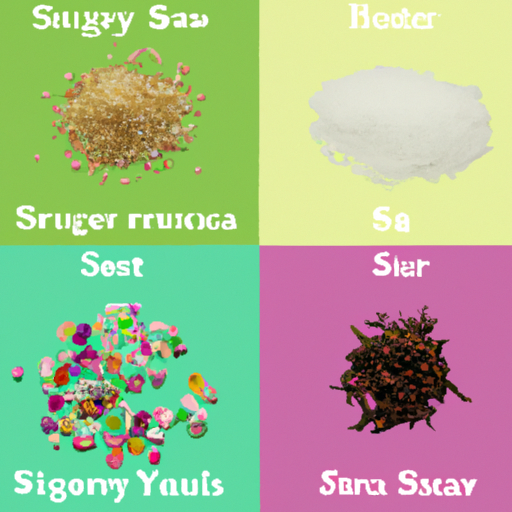
Being a fan of barley tea myself, I’ve frequently pondered what kind of sugar is found in this wholesome and invigorating beverage. There seems to be a debate: some argue that barley tea is solely composed of natural sugars, while others suggest that some manufacturers might incorporate extra sugars to improve its flavor. As an AI language model, I took it upon myself to delve into this matter and uncover the facts surrounding this claim.
Before delving into the specifics of barley tea, it’s important to understand the different types of sugar that exist. There are two main categories; natural sugars which come from fruits and vegetables, and added sugars which are commonly found in processed foods and drinks. Added sugars can be harmful to our health when consumed in excess as they are high in calories and can lead to conditions such as obesity, diabetes, heart disease, and more.
With this knowledge in mind, let’s take a closer look at what type of sugar is present in barley tea.
Key Takeaways
- Barley tea contains natural sugars from roasted barley grains, which are not harmful in moderation.
- Natural sweeteners like those in barley tea support digestive health and reduce the risk of chronic diseases.
- Added sugars provide no nutritional value and can lead to weight gain, inflammation, and increased risk for chronic diseases.
- Store-bought brands of barley tea may contain added sweeteners, so it’s important to check the ingredients list.
Understanding the Different Types of Sugar
You’ll be surprised to learn that not all sugars are created equal, so let’s break down the different types and how they affect our bodies!
There are several types of sugar substitutes available in the market today. Some of these include natural sweeteners like honey, maple syrup, and agave nectar, while others are artificial sweeteners like aspartame and sucralose. Each type has its own unique properties that make it suitable for certain applications.
While sugar is an essential component of our diet, consuming too much can have negative effects on our health. Excessive sugar intake has been linked to obesity, diabetes, heart disease, and other chronic illnesses. This is because sugar is quickly absorbed into the bloodstream and causes a spike in insulin levels which can lead to inflammation and damage to various organs in the body.
So what does this mean for barley tea? Well, barley tea typically contains natural sugars from the roasted barley grains used to make it. These sugars are not harmful when consumed in moderation as part of a balanced diet. In fact, some studies suggest that drinking barley tea may even help regulate blood sugar levels due to its high fiber content.
With that said, let’s take a closer look at the other ingredients found in this popular beverage!
Barley Tea Ingredients
So now that I’ve got a better understanding of the different types of sugar, let’s move on to discussing the ingredients in barley tea. As someone who enjoys drinking this beverage, it’s important for me to know exactly what I’m consuming.
Barley tea is primarily made up of barley grains, water, and sometimes other ingredients such as roasted corn or brown rice.
Barley
Barley is one of the most widely cultivated grains in the world. It’s a member of the grass family and can be grown in various climates, making it an essential crop for many cultures.
In Japan, barley tea is a popular beverage that’s consumed both hot and cold throughout the year. To make barley tea, there are different brewing techniques depending on personal preference, but the basic recipe involves boiling roasted barley grains in water.
Barley has several health benefits, including being an excellent source of fiber and containing essential nutrients like vitamin B6 and iron. It’s also low in fat and calories, making it an ideal ingredient for those watching their weight.
The cultivation of barley dates back to ancient times, with evidence suggesting that it was first domesticated around 10,000 years ago in the Fertile Crescent region of Western Asia. Today, barley remains a crucial crop worldwide due to its versatility as both food and drink ingredients.
As we move onto discussing water next, it’s worth noting that quality water is just as important as high-quality barley when brewing delicious barley tea!
Water
Water is a crucial component in the brewing process of many beverages, including the popular roasted grain drink, barley tea. The quality of water used during brewing can significantly impact the final taste and aroma of the tea. Some factors to consider when selecting water for brewing include its mineral content, pH level, and chlorine levels.
When preparing barley tea, it’s best to use filtered or purified water as this will help to minimize any impurities that may negatively affect the flavor profile. Additionally, it’s important to note that different brewing methods may require different water temperatures and quantities. For instance, some people prefer to brew their barley tea using hot water while others opt for cold-brewing methods. Ultimately, the choice of brewing method will depend on personal preference and taste preferences.
With proper attention paid to water quality and brewing techniques, one can create a delicious cup of barley tea that is sure to please even the most discerning palate.
As we move onto discussing other ingredients used in making barley tea, it’s worth noting that each ingredient plays an essential role in creating a well-balanced flavor profile.
Other Ingredients
You probably think that making barley tea is as simple as boiling water and adding some tea leaves, but let me tell you, there are a variety of other ingredients that go into creating the perfect cup. Barley tea can be made with a wide range of flavor variations and brewing methods, which can affect the taste and aroma of the final product.
To start off, let’s take a look at the other ingredients commonly used in barley tea. Some recipes call for additional grains like corn or rice to be mixed with the barley for added texture and flavor complexity. Others may use herbs such as mint or ginger to add a refreshing kick. And let’s not forget about sweeteners! While some prefer their barley tea unsweetened, others may opt for honey or sugar to balance out any bitterness from the roasted barley. These small additions can make a big difference in enhancing your drinking experience.
With so many options available, it’s no wonder why people continue to experiment with different brewing methods and ingredient combinations when it comes to making their perfect cup of barley tea. But what type of natural sugar is present in this popular drink? Let’s find out in the next section.
Natural Sugar in Barley Tea
There’s nothing like the taste of natural sugar found in a refreshing cup of barley tea. Not only does it satisfy your sweet tooth, but it also provides numerous health benefits. Natural sweeteners such as those found in barley tea are known to have a positive impact on our health by providing essential nutrients and being low-glycemic.
Here are four reasons why you should opt for natural sugar in your barley tea:
-
It can help regulate blood sugar levels: Unlike added sugars, which cause spikes and crashes in blood sugar levels, natural sugars are absorbed more slowly into the bloodstream. This helps regulate glucose levels and prevents energy crashes.
-
It contains valuable nutrients: Natural sweeteners contain vitamins and minerals that are essential for our body’s functions. For example, honey is rich in antioxidants while coconut sugar has high amounts of potassium.
-
It supports digestive health: Artificial sweeteners have been linked to gastrointestinal problems such as bloating and gas. On the other hand, natural sugars such as those found in barley tea can help promote gut health by feeding beneficial bacteria.
-
It reduces the risk of chronic diseases: The excessive consumption of added sugars has been linked to numerous chronic diseases such as diabetes, obesity, and heart disease. By limiting your intake of added sugars and choosing natural alternatives instead, you reduce your risk of developing these conditions.
While natural sugar is a great option for adding sweetness to your beverage or food, it’s important to recognize the negative impact that added sugars can have on our health. In the next section, we’ll explore how added sugars affect our bodies and why it’s important to limit their consumption.
Added Sugar in Barley Tea
Did you know that many store-bought barley tea brands contain added sweeteners that can negatively impact your health? While natural sugar found in barley itself is a healthy carbohydrate, added sugars provide no nutritional value and can lead to weight gain, inflammation, and an increased risk for chronic diseases such as diabetes and heart disease.
To make their products more appealing to consumers’ taste buds, some companies add sugar or artificial sweeteners to their barley tea blends. However, these additives can have negative effects on the body. For example, consuming too much added sugar has been linked to obesity and tooth decay. Additionally, many people experience adverse reactions to artificial sweeteners such as headaches or digestive issues.
Despite the potential downsides of added sugars and sweeteners in barley tea, there are ways for consumers to still enjoy this beverage without compromising their health. In the next section, we will discuss how to identify whether a brand of barley tea contains added sugars or not.
| Effects of Added Sugar on Health | Impact of Sugar Substitutes on Taste |
|---|---|
| Increased risk for chronic diseases such as diabetes and heart disease | May cause adverse reactions like headaches or digestive issues |
| Can lead to weight gain and inflammation | Do not provide any nutritional value |
| Linked with tooth decay | Used by companies to make their products more appealing |
Knowing about the potential negative effects of added sugars in barley tea can help us make better choices when it comes to selecting a brand. By being aware of what we consume, we can take steps towards living healthier lives. In the next section, we will explore how one can identify if a brand contains any added sugar or artificial sweeteners.
How to Identify Added Sugar in Barley Tea
Identifying added sweeteners in store-bought brands of barley tea can be tricky, but there are some key indicators to look out for. Here are four ways to identify added sugar in your barley tea:
-
Check the nutrition facts label: Added sugars may appear under different names such as high fructose corn syrup, cane sugar, or honey. Be wary of any ingredient that ends with -ose, which indicates a type of sugar.
-
Taste test: If your barley tea tastes excessively sweet or has an artificial aftertaste, it may contain added sweeteners.
-
Read the ingredient list: Look for ingredients such as maltodextrin or other artificial sweeteners that are often used to enhance flavor.
-
Research the brand’s reputation: Some brands have a reputation for using excessive amounts of sugar in their products.
By being mindful of these indicators, you can make informed decisions about the type and amount of sugar you consume through your favorite beverage.
Moving on to the next section about the "sugar content in different brands of barley tea,"it is important to note that not all brands use equal amounts of sugar in their products. Therefore, it is always advisable to check the nutrition facts label and read through the ingredient list before making a purchase decision.
Sugar Content in Different Brands of Barley Tea
As I continue my exploration on the sugar content of barley tea, one important aspect to consider is how different brands compare in terms of sugar content. By comparing various brands, I can gain a better understanding of which ones have higher or lower amounts of added sugars.
This will allow me to make more informed decisions about what types of barley tea to consume and the potential health implications associated with them.
Comparison of Sugar Content
You’ll be happy to know that barley tea contains significantly less sugar than many other popular drinks. In fact, most brands of barley tea do not contain any added sugar at all, making it a great choice for those who are watching their sugar intake. Some brands may use natural sugar substitutes like stevia or monk fruit to enhance the taste without adding calories.
Comparing barley tea with other sugary drinks, such as soda or energy drinks, the difference is staggering. A 12-ounce can of soda contains around 39 grams of added sugar, while a bottle of sports drink may contain up to 52 grams. On the other hand, an average serving of barley tea has only about 1-2 grams of naturally occurring sugars from the grain itself. This makes it an excellent alternative for those who want to cut down on their sugar consumption without sacrificing flavor.
Moving forward into health implications, let’s delve deeper into how this low-sugar beverage can benefit your body.
Health Implications
With its low calorie content and lack of added sugars, barley tea can provide a refreshing and healthful alternative to sugary beverages. However, it is important to note that barley tea does contain natural sugars in the form of maltose. While maltose is a natural sugar substitute that does not have the same negative impact on blood sugar levels as added sugars, it can still affect those with diabetes or other conditions that require careful monitoring of blood sugar levels.
To put this into perspective, let’s take a look at a comparison between the sugar content of barley tea and other popular drinks. As shown in the table below, while barley tea contains some natural sugars, it still has significantly less sugar than common sugary drinks like soda or fruit juice. This makes barley tea an excellent choice for those looking to reduce their sugar intake without sacrificing flavor or refreshment.
| Drink | Sugar Content (per 12 oz) |
|---|---|
| Barley Tea | 1g |
| Soda | 39g |
| Fruit Juice | 36g |
While barley tea does contain natural sugars in the form of maltose, it is still a healthier option compared to sugary drinks like soda or fruit juice. For those with specific dietary concerns related to blood sugar levels, there are also alternatives to added sugars that can be used in moderation for sweetness without causing spikes in blood glucose.
Alternatives to Added Sugar
As someone who’s health-conscious and aware of the negative effects of added sugar, I’ve been exploring alternatives that can satisfy my sweet tooth without compromising my well-being.
Natural sweeteners like honey, maple syrup, and stevia are great options. They offer a more nutritious alternative to refined sugar while still providing the same sweetness.
Additionally, there are various sugar-free options available in the market today. Monk fruit sweetener and xylitol may be worth considering for those looking to completely eliminate sugar from their diet.
Natural Sweeteners
If you’re looking for a healthier option to sweeten your barley tea, try using natural sweeteners like honey or maple syrup. These alternatives are great options because they contain vitamins and minerals that are beneficial for our health.
Honey, for example, contains antioxidants that can help boost our immune system and fight off infections. However, it’s important to note that honey is still a form of sugar and should be consumed in moderation.
Another natural sweetener worth considering is stevia. Stevia has gained popularity as a sugar substitute due to its zero calorie content and low glycemic index value. It also has potential health benefits such as reducing blood pressure levels and improving insulin sensitivity.
While both honey and stevia have their own set of benefits, it’s important to weigh the drawbacks as well before choosing one as a natural sweetener for your barley tea.
When it comes to finding sugar-free options for your drinks, there are plenty of choices available on the market today.
Sugar-Free Options
Looking for a healthier drink option? You’ll be surprised to know that the average American consumes about 150 pounds of artificial sweeteners per year.
If you’re concerned about your sugar intake, there are many sugar substitutes available on the market. Some popular options include stevia, erythritol, and monk fruit extract. These natural sweeteners have been shown to have little to no effect on blood sugar levels and can be used in DIY sugar-free barley tea recipes.
When making barley tea at home, try using these sugar substitutes instead of traditional white or brown sugars. They offer a low-calorie alternative that doesn’t sacrifice taste. Additionally, using natural sweeteners can help reduce the risk of obesity, diabetes, and other health problems associated with excessive sugar consumption.
By choosing healthier alternatives like these, you can enjoy your favorite drinks without worrying about the negative impact on your health. Switching to sugar-free options may seem daunting at first, but it’s an easy way to make small changes towards better health habits.
Next up, let’s explore some of the health benefits that come with drinking barley tea regularly!
Health Benefits of Barley Tea
One of the health benefits of barley tea is that it can help improve digestion. Barley tea contains fiber and antioxidants which are known to promote healthy gut bacteria and reduce inflammation in the digestive tract. Drinking a cup of barley tea after a meal can help alleviate bloating, constipation, and other digestive discomforts.
In addition to aiding digestion, barley tea also has potential benefits for heart health. The antioxidants found in barley tea may help lower cholesterol levels and reduce the risk of heart disease. It is also rich in potassium which is essential for maintaining normal blood pressure levels.
Barley tea is not only beneficial for our physical health but also has cultural significance and history. In Japan, Korea, and China, it’s a popular beverage enjoyed both hot or cold throughout the year. The brewing tips and flavor profiles differ depending on each country’s traditions, but one thing remains consistent – its popularity as a refreshing drink with numerous health benefits. However, like any food or beverage, there are risks and side effects associated with consuming too much barley tea which we will discuss in the next section.
Risks and Side Effects
You definitely don’t want to miss out on learning about the potential risks and side effects associated with consuming too much of barley tea. While it’s generally considered safe, excessive consumption can lead to certain issues that you need to be aware of.
One of the main concerns with drinking too much barley tea is sugar overdose. Although barley tea is a healthy beverage that contains natural sugars, consuming excessive amounts can cause a spike in blood sugar levels, leading to insulin resistance and weight gain. If you have diabetes or are trying to manage your blood sugar levels, it’s important to monitor your intake of barley tea and other sugary beverages.
Another possible risk associated with drinking barley tea is allergic reactions. While rare, some people may experience an allergic reaction after consuming this beverage. Symptoms may include skin rashes, hives, itching, swelling around the mouth or throat, difficulty breathing or swallowing, abdominal pain or cramps, nausea, and vomiting. If you experience any of these symptoms after drinking barley tea, seek medical attention immediately.
While there are several health benefits associated with drinking barley tea in moderation, excessive consumption can lead to certain risks and side effects such as sugar overdose and allergic reactions. As with any food or beverage you consume regularly, it’s essential always to monitor your intake carefully for your overall health and well-being.
Frequently Asked Questions
Can barley tea be made without any type of sugar?
Yes, barley tea can absolutely be made without any type of sugar. There are several alternatives to using sugar in barley tea recipes, such as adding honey or stevia for sweetness.
Another option is to brew the tea with other herbs and spices, like ginger or mint, which can add flavor without the need for added sweeteners. Overall, there are many delicious and healthy sugar-free barley tea recipes available that still provide all the benefits of this popular beverage.
So if you’re looking to cut back on your sugar intake, give one of these alternatives a try!
Does the natural sugar in barley tea affect its taste?
As a lover of barley tea, I can confidently say that the natural sugar in this beverage does have an impact on its taste. However, it’s important to note that the effects of sugar go beyond just flavor.
For instance, adding sugar to barley tea can increase its caffeine content and potentially enhance its energizing properties. On the other hand, excessive consumption of added sugars has been linked to various health issues such as obesity and diabetes.
Therefore, while the natural sugars in barley tea may contribute positively to its taste and benefits, it’s crucial to consume it in moderation and be mindful of the impact of added sugars on our overall health.
Is there a recommended daily limit for consuming barley tea with added sugar?
As someone who enjoys drinking barley tea with added sugar, I was curious about the recommended intake and potential health effects. According to research, there doesn’t appear to be a specific daily limit for consuming barley tea with added sugar.
However, it’s important to keep in mind that excessive sugar consumption can have negative impacts on overall health and lead to issues such as weight gain and increased risk of diseases like diabetes. It may be beneficial to moderate one’s intake of sugary beverages, including those made with barley tea.
Additionally, opting for natural sweeteners or reducing the amount of added sugar in the beverage can also be a healthier choice. While further studies are needed on the specific effects of consuming barley tea with added sugar, being mindful of one’s overall sugar intake is always a good idea for maintaining optimal health.
Can barley tea with added sugar be harmful for people with diabetes?
I know you may be concerned about the potential harm of drinking barley tea with added sugar if you have diabetes. However, it’s important to note that the sugar content in barley tea can vary depending on the type and amount of sugar used.
A comparison of different types of sugars shows that some are higher on the glycemic index than others, which means they can cause a more rapid increase in blood sugar levels. That being said, there is limited research specifically on the impact of barley tea with added sugar on people with diabetes.
It’s always best to consult with your healthcare provider and monitor your blood sugar levels closely if you choose to consume this beverage.
Are there any differences in the sugar content of cold-brewed vs. hot-brewed barley tea?
I was curious to know if there are any differences in the sugar content of cold-brewed vs. hot-brewed barley tea.
After conducting some research, I found that the brewing method does not significantly affect the sugar content of barley tea. However, it’s important to note that some brands may add sweeteners such as cane sugar or high fructose corn syrup to their barley tea products.
If you’re looking for a sugar-free alternative, consider using natural sweeteners like honey or stevia instead.
Overall, when it comes to choosing between hot and cold brewing methods for making barley tea, the decision should be based on personal preference rather than concerns about sugar content.
Conclusion
Overall, barley tea is a healthy and delicious beverage that you can enjoy without worrying about excessive added sugars. As I’ve discussed, there are some natural sugars present in barley tea. However, it’s important to look out for any added sugars that may have been included during production. By reading ingredient labels carefully and choosing brands with little or no added sugar, you can enjoy all the health benefits of barley tea without any negative effects.
So why not give barley tea a try? Not only is it low in calories and sugar, but it also contains antioxidants and other beneficial compounds. Plus, its nutty flavor makes for a refreshing alternative to traditional teas or sugary drinks.
Go ahead and pour yourself a cup of barley tea and savor all the benefits this unique beverage has to offer. You won’t regret it!
Barley Tea
What Is The Best Brand Korean Oganic Barley Tea
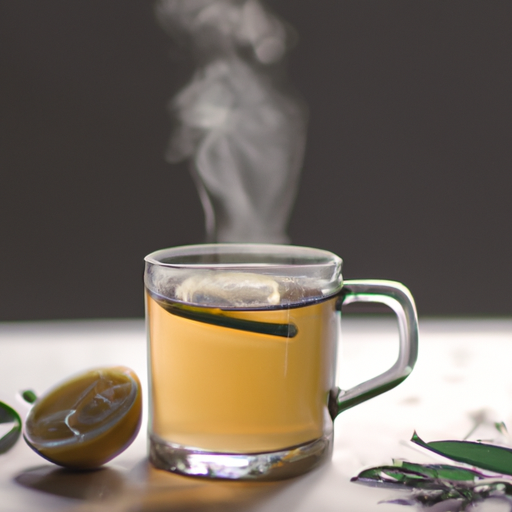
As someone who enjoys Korean food, I’ve always been intrigued by the diverse range of teas Korea has to offer. Barley tea, in particular, captures my interest with its distinctive taste and the many health advantages it provides.
As someone who is always on the lookout for organic and natural products, I decided to delve into the world of Korean organic barley tea to find out which brands offer the best taste and quality.
Barley tea has been consumed in Asia for centuries and is known for its ability to boost digestion, reduce inflammation, and even aid in weight loss. It is also a popular drink during hot summer months due to its cooling effect on the body.
With so many brands offering different blends and packaging options, it can be overwhelming to choose one that fits your preferences. In this article, I will share my research on the top Korean organic barley tea brands available in the market today.
Key Takeaways
- Korean barley tea is a popular drink with numerous health benefits, including aiding in digestion, reducing inflammation, and aiding in weight loss.
- Organic and natural products are preferred by the author, and pure organic barley without any additional ingredients is preferred for brewing barley tea.
- Dong Suh Tea and Ottogi Organic Barley Tea are two top brands, with different roast levels, flavor profiles, and packaging designs to consider.
- Ottogi Tea is recommended to try, with easy brewing instructions and a pleasant flavor, while Dong Suh Tea offers versatility in brewing techniques and hot and cold brew options. Harim Tea and Lotte Tea also have unique flavors and health benefits worth trying.
Benefits of Drinking Barley Tea
Drinking barley tea regularly can provide a plethora of health benefits. It can reduce inflammation and promote digestion. Barley contains high amounts of antioxidants, which help fight off free radicals and lower the risk of chronic diseases like cancer and heart disease. It is also rich in fiber, aiding in weight management by keeping you fuller for longer periods.
Brewing barley tea is simple and easy. All you need to do is boil water and add one or two teabags per cup. Let it steep for about 5-10 minutes until the water turns a light brown color. You can sweeten it with honey or sugar if desired, but it tastes great on its own.
When looking for the best brand of Korean organic barley tea, make sure to check the label for any added preservatives or artificial flavors. Look for brands that use only pure organic barley without any additional ingredients. This ensures that you are getting all the health benefits without any harmful additives.
What to Look for in a Korean Organic Barley Tea
To make sure you’re getting the most out of your cup, it’s important to keep an eye out for certain qualities when choosing a Korean organic barley tea.
Firstly, consider your flavor preference. Some barley teas have a nuttier taste while others are more mild and sweet. If you prefer a stronger taste, look for teas made from roasted barley grains. On the other hand, if you prefer a sweeter taste without any bitterness, go for teas made from non-roasted grains.
Secondly, pay attention to the brewing method recommended by the brand. Although steeping time varies depending on personal preference, some brands may recommend specific brewing temperatures or water-to-tea ratios that can affect the overall taste and quality of the tea. Make sure to follow these guidelines to achieve the best results.
Lastly, check if the tea is packaged in eco-friendly materials such as biodegradable or recyclable packaging. This not only benefits our planet but also ensures that there are no harmful chemicals leaching into your drink.
With these tips in mind, you’ll be able to choose a high-quality Korean organic barley tea that suits your taste buds and brewing preferences perfectly.
Now let’s move on to exploring some of the top brands of Korean organic barley teas available in the market today.
Top Brands of Korean Organic Barley Tea
Discover the most tantalizing and flavorful options when it comes to enjoying Korea’s beloved roasted grain beverage. Korean organic barley tea is a popular drink that has been enjoyed for centuries due to its unique taste and health benefits.
When looking for the best brand of Korean organic barley tea, there are several factors to consider such as the quality of ingredients, brewing methods, and popular flavors.
One of the top brands of Korean organic barley tea is Dong Suh Tea. They offer a variety of flavors including original, citron, and corn silk. Their teas are made with high-quality roasted barley grains that give off a rich aroma and nutty flavor. Dong Suh Tea also offers convenient teabags for easy brewing at home or on-the-go.
Another great option is Ottogi Organic Barley Tea which uses 100% organic barley grains grown in Korea. Their tea has a slightly sweet taste with hints of caramel and is perfect for those who prefer a milder flavor profile. Ottogi also provides detailed instructions on how to brew their tea using either hot or cold water methods.
Whether you prefer bold or mild flavors, there are plenty of options when it comes to choosing the best brand of Korean organic barley tea. Popular flavors include original, citron, corn silk, and more. Brewing methods can vary from hot water steeping to cold-brewing overnight in the fridge.
Now let’s move onto our next section where we review one specific brand – ssanggye tea!
Ssanggye Tea Review
I recently tried Ssanggye Tea, a popular brand of Korean organic barley tea. I found it to be mild and slightly nutty in terms of taste and flavor profile. The quality of ingredients was impressive as the tea contained only two simple and natural ingredients: roasted barley and water.
Overall, I’d say that Ssanggye Tea offers good value for money as it comes in a large pack and is a healthy beverage option.
Taste and Flavor Profile
Get ready to savor the nutty and toasty flavor of the best Korean organic barley tea brands. When it comes to taste preferences, some people may prefer a stronger roasted flavor while others may prefer a milder and more refreshing taste. The brewing techniques also play a significant role in bringing out the desired flavors of the tea.
To give you an idea of what to expect in terms of taste and flavor profile, here is a table that showcases the different characteristics of some popular Korean organic barley tea brands:
| Brand | Roast Level | Flavor Profile | Aroma | Brewing Time |
|---|---|---|---|---|
| Ssanggye Tea | Medium-High Roast | Nutty and Robust | Earthy with hints of caramel | 3-5 minutes |
| O’sulloc Tea | Light Roast | Mild and Refreshing with subtle sweetness | Delicate and floral | 2-3 minutes |
| Korea Ginseng Corp. (KGC) Barley Tea | High Roast | Bold and Toasty with smoky notes | Rich and robust | 4-5 minutes |
As you can see from this table, each brand has its unique roast level, flavor profile, aroma, and recommended brewing time. These factors can greatly influence your overall experience when drinking Korean organic barley tea. However, regardless of your taste preference or brewing technique, one thing remains constant – high-quality ingredients are essential for creating an unforgettable cup of tea.
Quality of Ingredients
After exploring the taste and flavor profile of various Korean organic barley tea brands, I became curious about the quality of ingredients used in their production. As a consumer who values natural products, I wanted to know how these companies source their barley and if they use any additives or preservatives.
In my research, I discovered that some brands prioritize ingredient sourcing by using locally-grown barley that is free from pesticides and chemicals. These companies also avoid using artificial flavors or sweeteners, ensuring that each cup of tea is purely made from natural ingredients. Additionally, some brands employ traditional roasting methods to enhance the nutty and earthy flavor of the barley without compromising its nutritional value.
By prioritizing quality ingredients and production processes, these companies not only offer a healthier alternative to other beverages but also support sustainable agriculture practices in Korea.
Speaking of sustainability, it’s essential to consider whether these high-quality products are worth their price tag. How do consumers evaluate the value for money when purchasing Korean organic barley tea? Let’s delve into this topic further in our next section.
Value for Money
Investing in high-quality, naturally-sourced beverages is a great way to support sustainable agriculture and promote a healthier lifestyle while getting the most value for your money. When it comes to Korean organic barley tea, there are several brands that offer excellent quality at an affordable price point. However, it’s important to consider not only the taste and ingredients but also the packaging design and brewing instructions.
To help you make an informed decision, I’ve created a table comparing three popular brands of Korean organic barley tea: Ottogi, Dong Suh, and Harney & Sons. While all three brands use natural ingredients and have similar brewing instructions, there are some differences in their packaging design. Ottogi stands out with its convenient individual tea bags, making it easy to brew on-the-go or at work. Dong Suh offers a larger quantity per package for those who drink barley tea regularly or want to stock up. Harney & Sons has a more premium look with its elegant tin can packaging that would make a great gift for tea lovers.
When looking for the best brand of Korean organic barley tea that offers value for money, it’s important to consider not only the taste and quality of ingredients but also the packaging design and brewing instructions. Each brand has its own unique features that cater to different needs and preferences. Next up is my review of Ottogi Tea – let’s see how it stacks up against these other brands!
Ottogi Tea Review
Let’s take a closer look at Ottogi Tea, a popular Korean organic barley tea brand. The first thing that caught my attention was the packaging design. It comes in a simple yet elegant box with a picture of barley on the front.
Inside, each tea bag is individually wrapped in paper to ensure freshness. When it comes to brewing instructions, Ottogi Tea provides clear and concise directions on the back of the box. Simply steep one tea bag in hot water for 3-5 minutes and enjoy!
I appreciate how easy it is to make this tea without any complicated steps or equipment needed. Overall, I found Ottogi Tea to be a great value for its quality and taste. The flavor is rich and nutty with a subtle sweetness that makes it perfect for any time of day.
If you’re looking for an organic barley tea brand that delivers on both taste and convenience, I highly recommend giving Ottogi Tea a try. Moving onto our next review, let’s see how Dong Suh Tea compares to Ottogi Tea.
Dong Suh Tea Review
You’re missing out on a whole new level of tea experience if you haven’t tried Dong Suh Tea yet – it’s like nothing you’ve ever tasted before! Dong Suh Tea is one of the best Korean organic barley teas in the market today. It comes in different varieties such as roasted barley, corn silk and even brown rice tea. Each variety offers unique flavors and health benefits that cater to different preferences.
One thing I love about Dong Suh Tea is its versatility when it comes to brewing techniques. You can opt for hot or cold brews depending on your mood or preference. For a hot brewed tea, simply boil water and steep the teabag for 2-3 minutes. If you prefer cold brews, soak the teabag in cold water overnight, and voila! You now have a refreshing beverage that’s perfect for summer days.
Next up, let me tell you about another fantastic brand of Korean organic barley tea – Harim Tea. This brand also offers various flavors including plain roasted barley tea, buckwheat tea, and omijacha (five-flavored berry) tea – all of which are equally delicious!
Harim Tea Review
After trying out Dong Suh tea, I was curious to see what other Korean organic barley teas are available. My search led me to Harim Tea, another popular brand in Korea that is known for its high-quality teas.
To brew Harim Tea, I followed the same instructions as with Dong Suh tea – simply add one tea bag per cup of hot water and steep for a few minutes. The aroma of the tea was different from Dong Suh’s – it had a slightly sweeter and nuttier scent.
Here are some things that stood out to me about Harim Tea:
- The flavor is mild and smooth, with a slight natural sweetness that makes it easy to drink.
- The packaging is eye-catching and modern, making it a nice addition to any kitchen or office pantry.
- Harim Tea is made with 100% organic roasted barley, which provides numerous health benefits such as aiding digestion and improving blood sugar levels.
- It can be enjoyed hot or cold, making it versatile for any season or occasion.
- Overall, I found Harim Tea to be an enjoyable and healthy alternative beverage option.
Moving on from Harim Tea, I decided to try Lotte Tea next.
Lotte Tea Review
My taste buds were excited to try out Lotte Tea, a popular Korean beverage that’s been gaining popularity in recent years.
As soon as I opened the package, I was greeted with a pleasant aroma of roasted barley. The tea bags themselves were also nicely packaged and easy to use.
When I took my first sip of Lotte Tea, I was pleasantly surprised by its robust flavor. The roasted barley taste was prominent but not overpowering, and it had a slightly sweet aftertaste that lingered on my tongue. It’s perfect for those who enjoy a stronger tea flavor without any bitterness.
Overall, I found Lotte Tea to be an enjoyable experience. Its unique blend of flavors and aromas make it stand out from other barley teas on the market.
Whether you’re looking for a refreshing drink or something warm to cozy up with during the colder months, Lotte Tea is definitely worth trying out.
Frequently Asked Questions
How is Korean organic barley tea different from regular barley tea?
When it comes to Korean organic barley tea, there are a few key differences that set it apart from regular barley tea. For one, the benefits of drinking this type of tea are numerous. It’s known for its ability to aid in digestion and promote healthy skin, among other things.
In terms of taste comparison, Korean organic barley tea has a slightly nuttier flavor than regular barley tea, which can be more earthy and bitter. However, both types of tea have their own unique qualities and can be enjoyed by those who appreciate the taste and health benefits of barley-based beverages.
Overall, if you’re looking for a refreshing drink that’s good for your body and tastes great too, Korean organic barley tea is definitely worth trying out!
Can Korean organic barley tea help with weight loss?
I’ve found that incorporating Korean organic barley tea into my daily routine has been beneficial for both digestion and weight loss.
This type of tea is known to have a high fiber content, which aids in digestion by promoting regular bowel movements and reducing bloating. Additionally, the antioxidants present in the tea help to boost metabolism, leading to increased calorie burning and potential weight loss.
It’s important to note that while Korean organic barley tea can be a helpful addition to a healthy lifestyle, it shouldn’t be relied upon as the sole method for weight loss.
As for the best brand of Korean organic barley tea, I suggest doing some research and trying out different options until you find one that suits your taste preferences.
Is it safe to drink Korean organic barley tea during pregnancy?
Pregnancy safety is a top concern, so it’s important to consider what foods and beverages are safe to consume. In the case of Korean organic barley tea, it’s generally considered safe for pregnant women to drink in moderation. However, it’s always best to consult with your healthcare provider before consumption.
Drinking Korean organic barley tea during pregnancy can provide health benefits, such as aiding digestion and potentially reducing inflammation due to its high antioxidant content. It’s important to note that excessive consumption of any tea during pregnancy should be avoided.
In summary, it’s safe to drink Korean organic barley tea during pregnancy, but always consult with your healthcare provider and consume in moderation.
How long does Korean organic barley tea stay fresh?
When it comes to storing Korean organic barley tea, there are a few tips to keep in mind to ensure freshness. First, it’s important to store the tea in an airtight container or bag away from light and heat. This will help preserve the flavor and aroma of the tea for longer.
Additionally, brewing techniques can also impact how long the tea stays fresh. To avoid over-brewing and potentially spoiling the tea, use water that’s just below boiling and steep for no more than 3-5 minutes.
By following these storage tips and brewing techniques, Korean organic barley tea can stay fresh for up to six months or even longer.
Are there any potential side effects of drinking Korean organic barley tea?
While Korean organic barley tea is generally considered safe for consumption, there are still potential side effects that should be taken into consideration.
For instance, drinking large amounts of this tea may lead to stomach irritation or bloating due to its high fiber content. Additionally, those who have allergies to grains or gluten should avoid drinking barley tea altogether.
Long term consumption of barley tea has also been linked with certain health benefits such as improved digestion and lower cholesterol levels. However, it’s important to note that excessive and prolonged intake may lead to negative effects on the liver and kidneys.
As with any other food or beverage, moderation is key when it comes to consuming Korean organic barley tea in order to reap its health benefits without experiencing any adverse effects.
Conclusion
Overall, I highly recommend giving Korean organic barley tea a try. It’s not only a delicious and refreshing beverage, but it also offers numerous health benefits such as aiding digestion, reducing stress, and improving skin health.
When looking for the best brand of Korean organic barley tea, be sure to consider factors such as taste, aroma, and quality of ingredients. Some top brands to consider include Ssanggye Tea, Ottogi Tea, Dong Suh Tea, Harim Tea, and Lotte Tea.
As the old saying goes, "An apple a day keeps the doctor away,"but perhaps we should add "a cup of barley tea a day keeps the ailments at bay"to that list. So why not give it a try and see how this amazing drink can improve your overall wellbeing?
-

 Turmeric Tea4 weeks ago
Turmeric Tea4 weeks agoWhat Teas Are Low In Oxalates
-
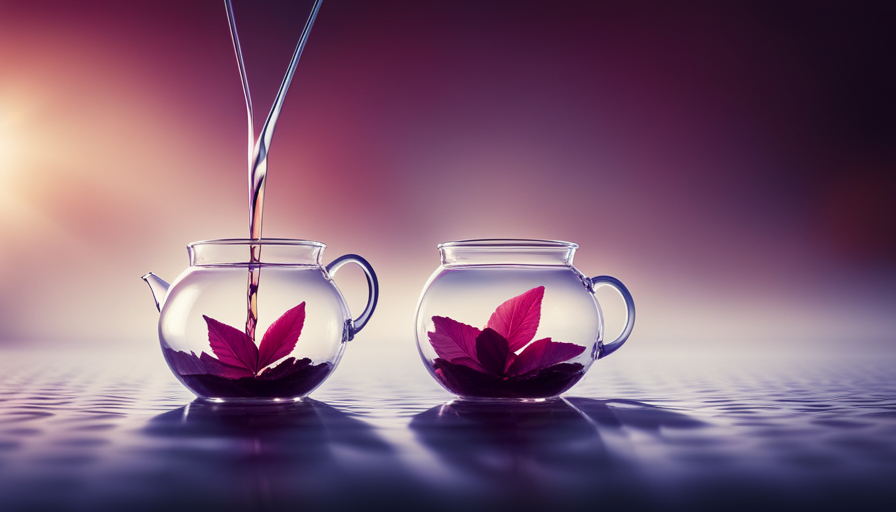
 Turmeric Tea4 weeks ago
Turmeric Tea4 weeks agoWhat Teas Have No Tannins
-

 Turmeric Tea3 months ago
Turmeric Tea3 months agoHow To Make Turmeric Tea With Powder
-

 Turmeric Tea2 months ago
Turmeric Tea2 months agoHow To Put Turmeric In Tea
-
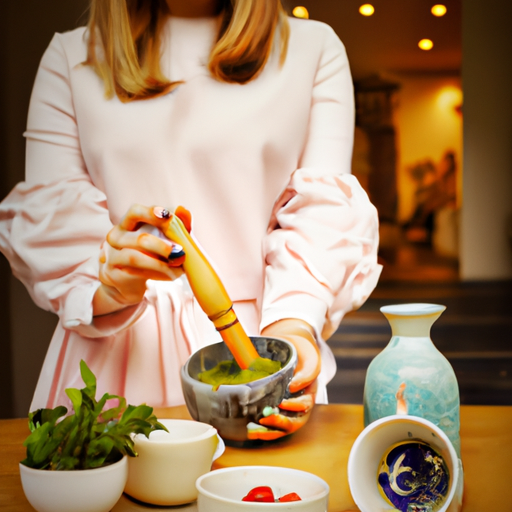
 Matcha Tea3 months ago
Matcha Tea3 months agoHow To Make Matcha Powder From Green Tea
-
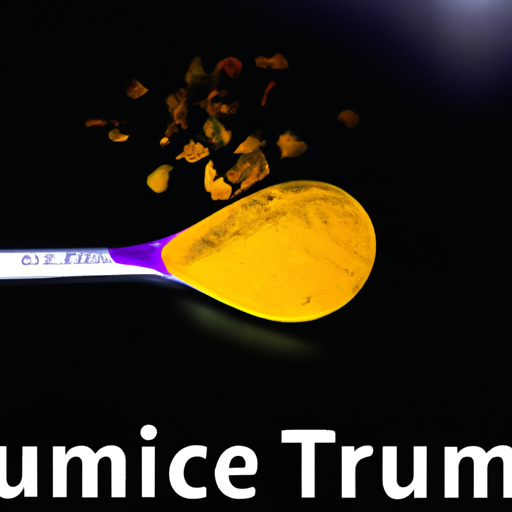
 Turmeric Tea2 months ago
Turmeric Tea2 months agoHow Much Is 500 Mg Of Turmeric In Teaspoons?
-

 Turmeric Tea3 months ago
Turmeric Tea3 months agoBrewing the Perfect Cup of Turmeric Tea
-

 Turmeric Tea2 months ago
Turmeric Tea2 months agoHow To Use Turmeric To Stop Periods






